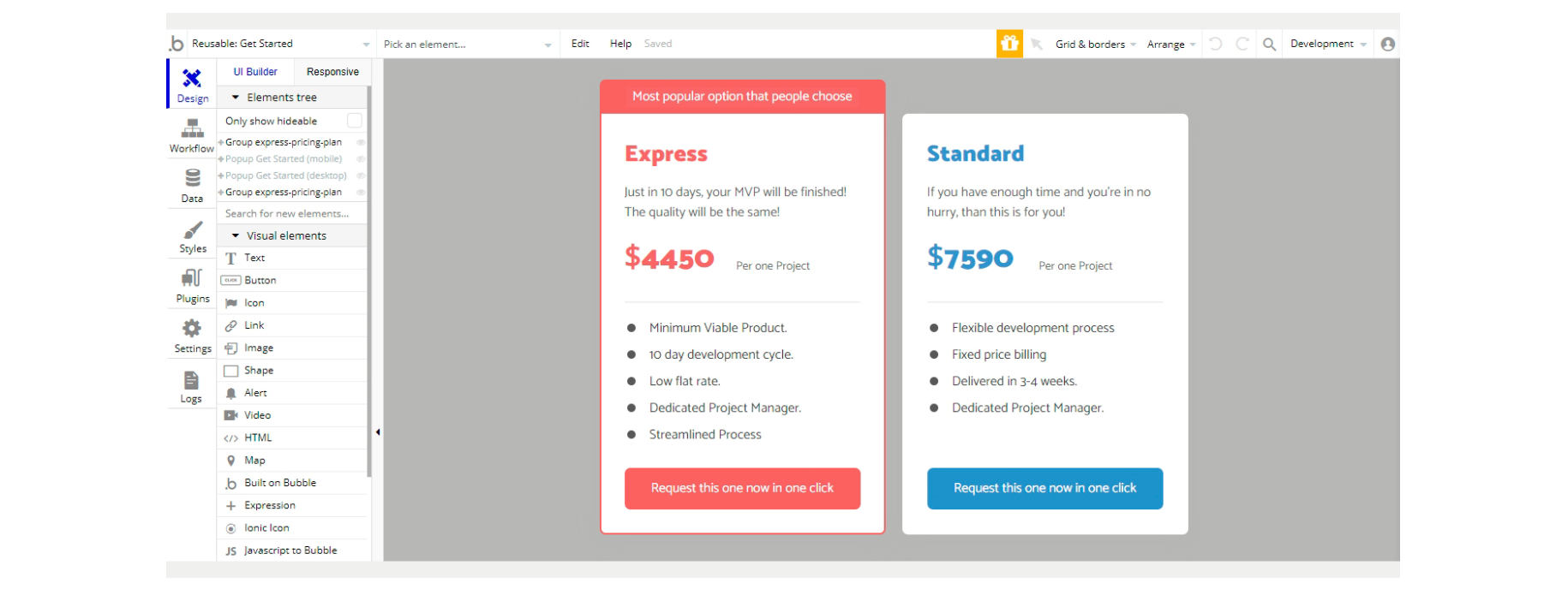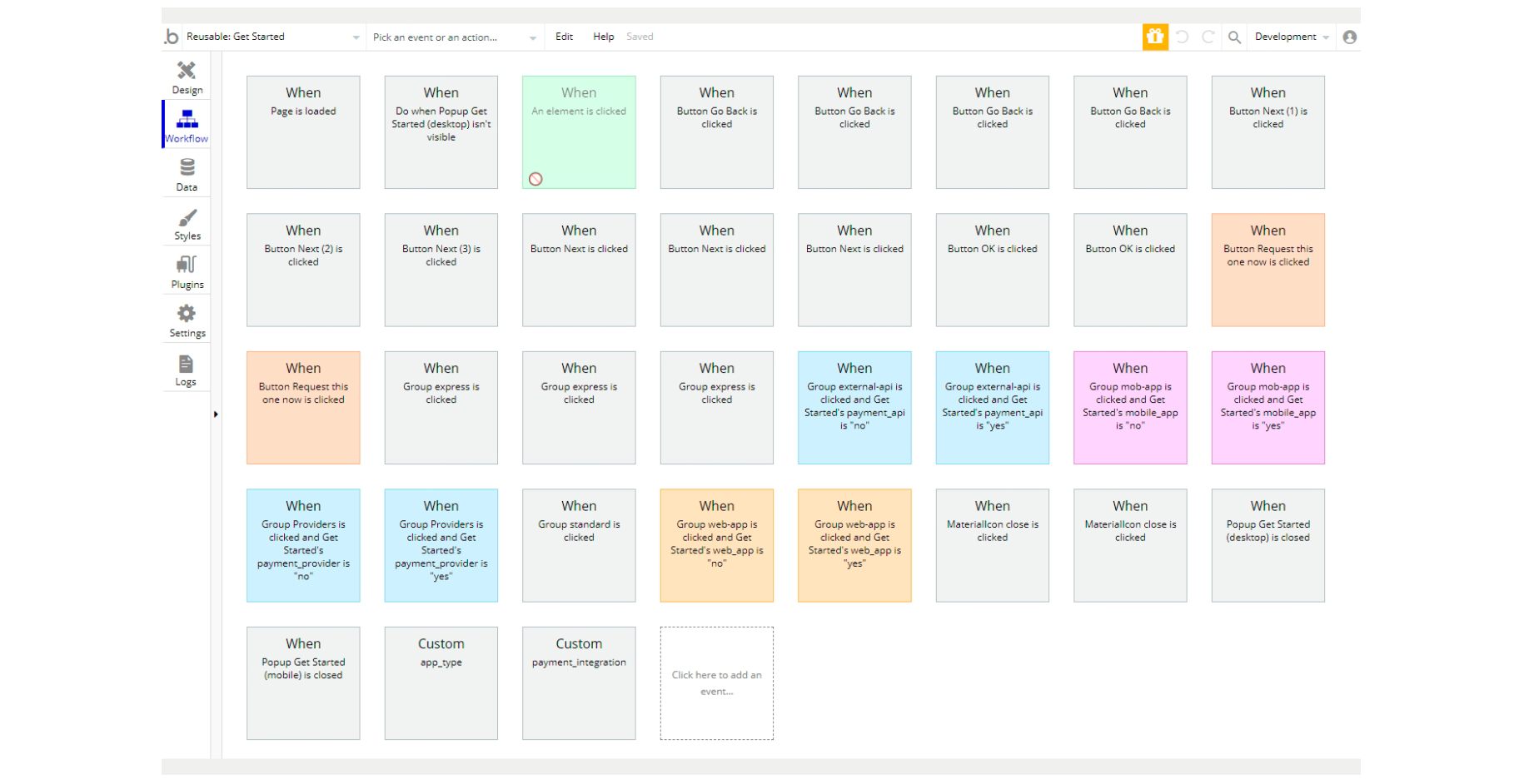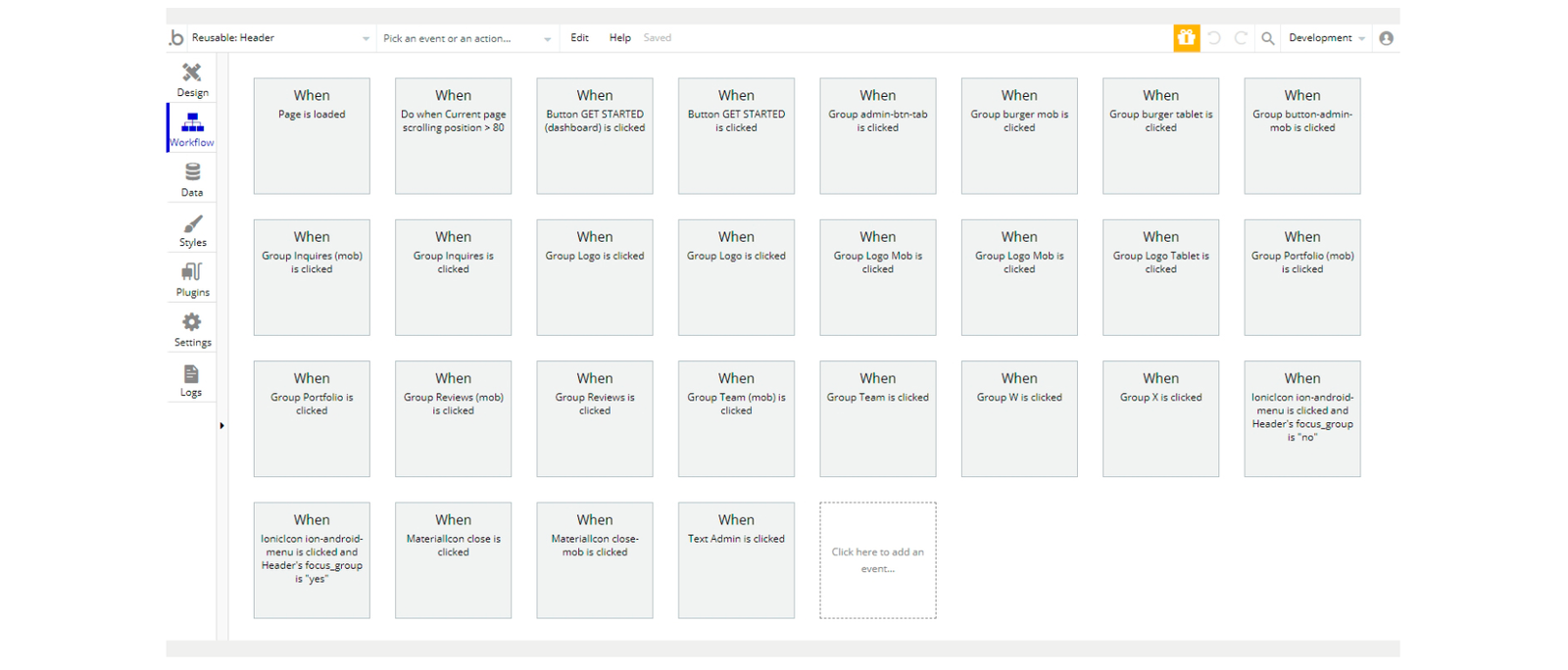This section states the purpose of each reusable element.
Introduction
Reusable Element - an element that contains other elements, like a group, that can be used in more than one place. This is useful when reusing the same elements often.
Tip: See Bubble Reference for details https://manual.bubble.io/core-resources/elements/reusable-elements 🙂
Reusable Elements
Footer
The footer reusable element is located at the bottom of a page. It provides an example of how it can include external links, such as company's social media, navigation, and copyright notices.
A great website footer design keeps people engaged and moving through the website. The workflows included with this element are pretty straightforward to follow.

This reusable element is customizable, so it is possible to change the styles and content of elements while keeping workflows or using them as inspiration for your own.
The workflow describes when and which popups should be shown to the user

Tip: Add Privacy and Terms page links here, as well as create separate pages for these links. It will help you go through App Store and Google Play approval procedures, in case you convert your Bubble app into native iOS and Android apps. These links are also important for Facebook login.
Get Started
This reusable element is needed to receive data from the user. It is a request form for subsequent communication with the seller of the service.

The workflow describes what user actions display various popups, transitions between active elements when buttons are pressed, as well as options for displaying elements with different page widths.

Header
The header reusable element sits at the top of each page and serves a few very important purposes. It does provide a place for the company's logo, navigation, and page title which are part of a consistent user experience that all good websites share.

This reusable element is customizable, so it is possible to change the styles and content of the element while keeping workflows or using it as inspiration for your own.
The workflow describes transitions between active elements when buttons are pressed, transitions between pages, and animations of elements groups.
